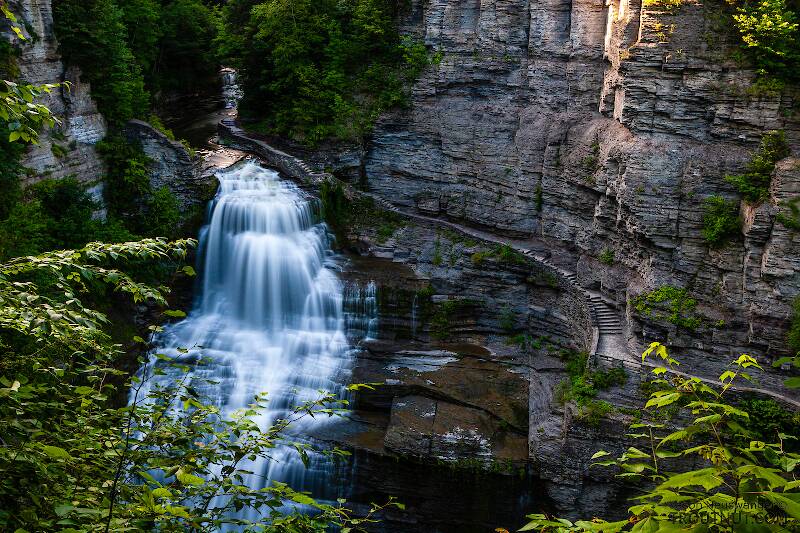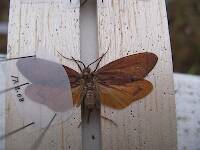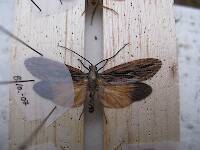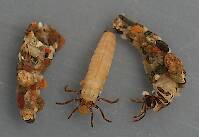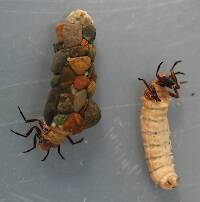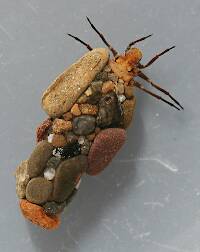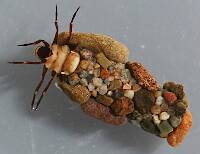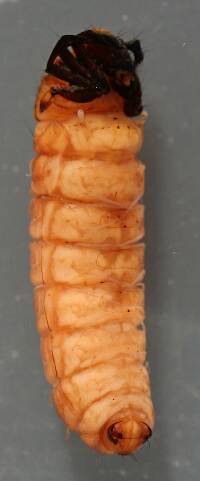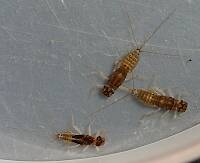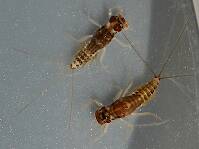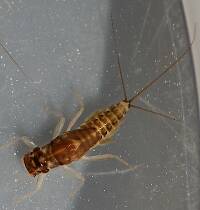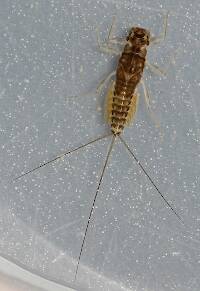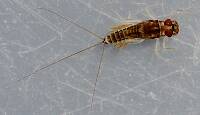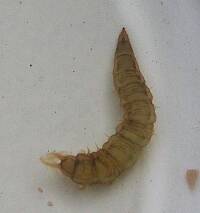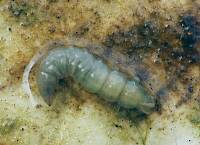
Hex Mayflies
Hexagenia limbata
The famous nocturnal Hex hatch of the Midwest (and a few other lucky locations) stirs to the surface mythically large brown trout that only touch streamers for the rest of the year.
Featured on the forum

It's only barely visible in one of my pictures, but I confirmed under the microscope that this one has a prosternal horn and the antennae are mid-way between the eyes and front of the head capsule.
I'm calling this one Pycnopsyche, but it's a bit perplexing. It seems to key definitively to at least Couplet 8 of the Key to Genera of Limnephilidae Larvae. That narrows it down to three genera, and the case seems wrong for the other two. The case looks right for Pycnopsyche, and it fits one of the key characteristics: "Abdominal sternum II without chloride epithelium and abdominal segment IX with only single seta on each side of dorsal sclerite." However, the characteristic "metanotal sa1 sclerites not fused, although often contiguous" does not seem to fit well. Those sclerites sure look fused to me, although I can make out a thin groove in the touching halves in the anterior half under the microscope. Perhaps this is a regional variation.
The only species of Pycnopsyche documented in Washington state is Pycnopsyche guttifera, and the colors and markings around the head of this specimen seem to match very well a specimen of that species from Massachusetts on Bugguide. So I am placing it in that species for now.
Whatever species this is, I photographed another specimen of seemingly the same species from the same spot a couple months later.
I'm calling this one Pycnopsyche, but it's a bit perplexing. It seems to key definitively to at least Couplet 8 of the Key to Genera of Limnephilidae Larvae. That narrows it down to three genera, and the case seems wrong for the other two. The case looks right for Pycnopsyche, and it fits one of the key characteristics: "Abdominal sternum II without chloride epithelium and abdominal segment IX with only single seta on each side of dorsal sclerite." However, the characteristic "metanotal sa1 sclerites not fused, although often contiguous" does not seem to fit well. Those sclerites sure look fused to me, although I can make out a thin groove in the touching halves in the anterior half under the microscope. Perhaps this is a regional variation.
The only species of Pycnopsyche documented in Washington state is Pycnopsyche guttifera, and the colors and markings around the head of this specimen seem to match very well a specimen of that species from Massachusetts on Bugguide. So I am placing it in that species for now.
Whatever species this is, I photographed another specimen of seemingly the same species from the same spot a couple months later.

Troutnut is a project started in 2003 by salmonid ecologist Jason "Troutnut" Neuswanger to help anglers and
fly tyers unabashedly embrace the entomological side of the sport. Learn more about Troutnut or
support the project for an enhanced experience here.
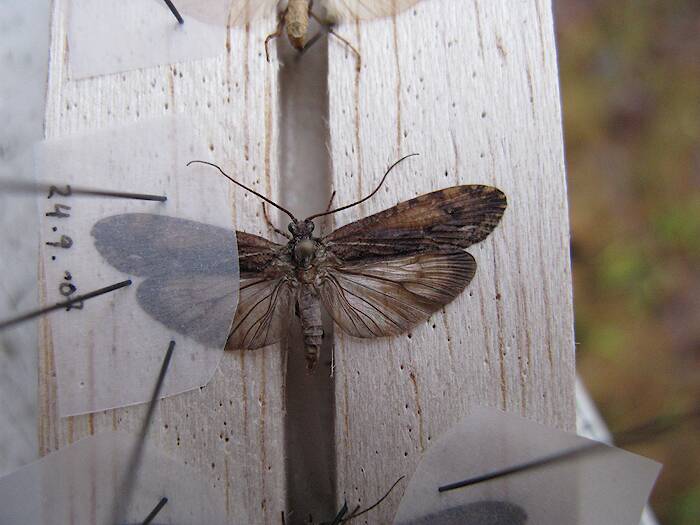
Taju on Nov 14, 2008November 14th, 2008, 11:29 pm EST
Hi,
is it possible to identify this species from Kentucky, 24.9.2007? The winglength is about 17 mm.
Jukka
is it possible to identify this species from Kentucky, 24.9.2007? The winglength is about 17 mm.
Jukka
GONZO on Nov 15, 2008November 15th, 2008, 3:26 am EST
Jukka, the pattern on the wings looks like Agrypnia vestita to me, but that's a guess. Dave Ruiter (Creno) is the caddisfly expert. Perhaps he will take a look at your specimen.
Creno on Nov 15, 2008November 15th, 2008, 3:55 am EST
Like Gonzo, I would guess Agrypnia vestita based on color and location. However I looked at alot of A.vestita specimens (and a few other Agrypnia species) and could not find one with the apical fork of hindwing R2 that appears to occur in your photo. Is that fork really there or could it be a fold from spreading?
Taju on Nov 15, 2008November 15th, 2008, 7:34 am EST
Many thanks for your comments :)
To Creno: the fork is not real, it is a shadow, because the surface is not smooth.
Jukka
To Creno: the fork is not real, it is a shadow, because the surface is not smooth.
Jukka
Quick Reply
Related Discussions
Topic
Replies
Last Reply
21
Feb 19, 2013
by Gutcutter
by Gutcutter
0
Sep 23, 2006
by Litobrancha
by Litobrancha
18
Sep 15, 2014
by Oldredbarn
by Oldredbarn
7
Feb 6, 2013
by Entoman
by Entoman

